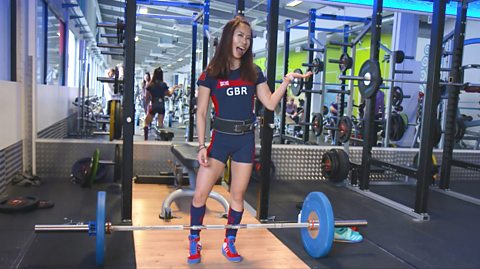Packed stadiums, generous scholarships and top-class facilities. University (or college) sport in the United States appears to have it all.
For many young athletes in Britain and worldwide, a US university sports scholarship is one option for continuing to train at a high level whilst studying. As well as having all or part of their tuition fees and costs paid for them, athletes will typically have access to academic support, state-of-the-art technology and regular high level competition.
We take a look at the world of US college sport and talk to a young British athlete in Iowa about her experience.
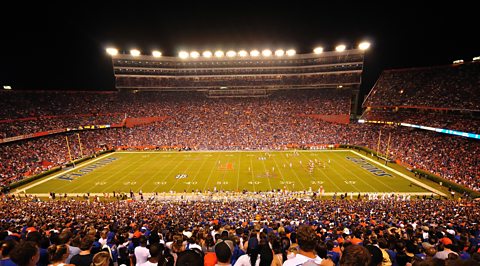 Image source, Arkorn
Image source, ArkornUniversity sport is a lot more popular in the US
UK university sport is rarely televised and spectator attendance at competitions isnât particularly high either, in comparison to the crowds drawn by some sports in the US.
In 2016, an American football game between the University of Tennessee and Virginia Tech broke the record for the highest ever attendance at a National Collegiate Athletic Association (NCAA) event, with 156,990 fans. For comparison, 62,000 people were in the Olympic Stadium to watch the London 2012 Olympics opening ceremony.
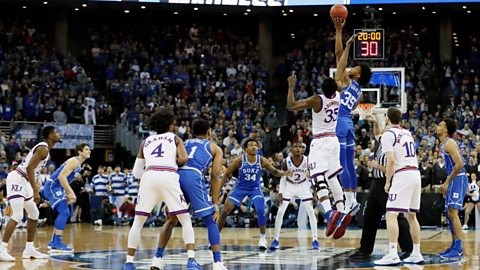 Image source, David Klutho
Image source, David KluthoHave you ever heard the term âMarch Madnessâ? It refers to the month-long NCAA basketball tournament in which 64 college teams take part, and it is avidly watched across the US.
The selection of the teams is a secretive process, and so the announcement itself is a big moment. Tens of millions of people fill out brackets guessing the winner of each game. Even former US President Barack Obama gets in on the act, revealing his bracket choices each year.
The interest in this event is so great that broadcasters CBS Sports and Turner Broadcasting bought the rights to broadcast the tournament until 2032 for a whopping ÂŁ14.37 billion.
Student athletes can even achieve celebrity status. Take Katelyn Ohashi as an example. The UCLA gymnastâs incredible floor routines, which scored perfect tens, went viral and have been viewed over 60 million times. Since graduating, Katelyn has been able to secure sponsorships with international brands.
 Image source, David Klutho
Image source, David KluthoHow it all works in the US
Most US university athletes fall under the banner of the NCAA. It organises 90 championships across 24 sports, entered by nearly 20,000 teams.
Each sport is divided into three divisions, with athletes in Division I and Division II eligible for scholarships. Over ÂŁ2.64 billion worth of athletics scholarships are provided annually to around 180,000 athletes. Sports scholarships are available at a few UK universities.
To qualify for a NCAA scholarship, a student must be an amateur athlete, not a professional. That means they canât have previously accepted any payment for their participation in a sport e.g. being paid to endorse a brand or accepting fees for media appearances (including advertising revenue from personal YouTube videos). But some athletes argue that they should either be paid for their athletic performance, or have the ability to make money from their success whilst still at college.
Some sports, such as boxing, sailing and rugby are run independently by their own associations.
What itâs like being a British athlete at a US university
Phoebe Turner is a gymnast at Iowa State University (ISU) and a former British Gymnastics national team member. Having seen other British gymnasts make the move over to the US, she was inspired to do so herself.
Phoebe receives a âfull rideâ scholarship which includes her tuition and living costs. More important than finances though, Phoebe says, is the âchance to be a student athlete and to be part of a teamâ which is âexciting and rewardingâ.
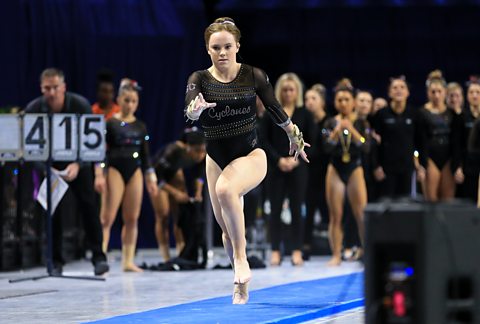 Image source, Matt Stamey
Image source, Matt StameyThe student athlete experience isn't just about sport. Phoebe states: âI feel very lucky to be able to use such incredible facilities that support my gymnastics as well as academics. For example, we have an academic success centre specifically for student athletes where we are able to receive tutoring for any class as well as academic advising.â
Most US university scholarships will include stipulations that the athlete must maintain certain grades to continue receiving support.
For Phoebe, securing her place at Iowa State meant using her own initiative:
âI reached out to multiple colleges across America to see if they had spots on their team and if they had scholarships available. Schools also reach out and recruit athletes but being an international student, this may be less likely to happen unless previous connections have been made by coaches or by competing at an international level.
âI also had to send training and competition videos to the coaches so they could get an idea of my gymnastics and if I would be a good fit for their team. From here they would then get in contact with my coach so that they can get a better understanding of not just my gymnastics but also just me as a person and my education.â

Phoebeâs advice for applying to a US university
- Start looking early as it can be a long process. Phoebe began considering colleges at 15 and visited a few, but even after verbally committing to Iowa State in January 2017, it took nearly a year to be made official.
- Keep coaches updated on your training and competition results. Even after Phoebe committed to Iowa State, she kept sending her future coaches regular updates of her progress.
- Stay focused on your schoolwork. Coaches will ask about recent grades, as academics are also a top priority.
- Donât make your decision just off the collegeâs ranking in your sport. You need to be happy with the courses on offer and the city youâll be living in for four years.

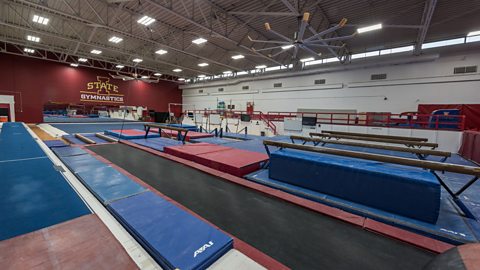 Image source, Luke Lu/Iowa State Athletics
Image source, Luke Lu/Iowa State AthleticsOutside of gymnastics, Phoebe was surprised at how different the academic experience itself is. For example, she didnât have to decide her major (the main focus of her degree) until the end of her Sophomore (second) year. Until then, she was able to choose from classes as wide-ranging as sociology and fashion and marketing.
Phoebe describes her overall experience as âamazing and so much funâ. She adds: âItâs definitely not easy and requires a lot of commitment and hard work but the opportunities and rewards you get in the end make it all so worthwhile.â
Six sports movies that got their facts wrong
Films about sport like Creed and Cool Runnings are very entertaining, but not always accurate.
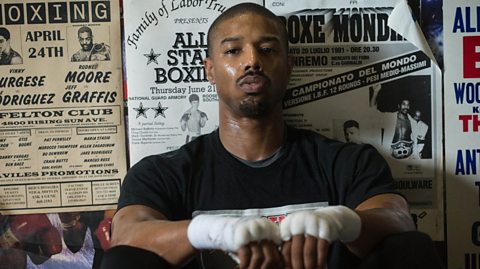
How does the crowd impact player performance?
We've spoken to football professionals about whether or not you want a noisy crowd.

How powerlifting helps me manage uni stress
Powerlifting champion Cherry explains how she juggles competitions with her university degree.
